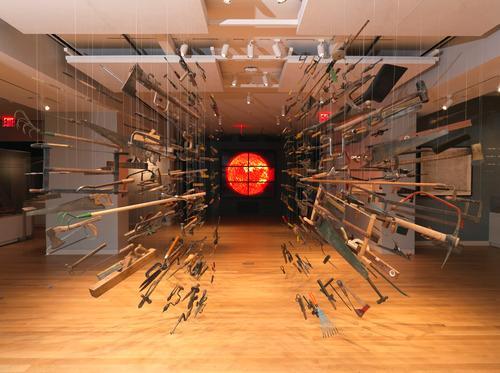
On Friday, Dec. 12, 1902, Andrew Carnegie moved into his just-finished home at 91st Street and Fifth Avenue, with his wife, Louise, and his 5-year-old daughter, Margaret, to whom he handed the key. By the lights of Manhattan society, the house was in nowheresville, near a former shantytown with only a lemonade stand by way of local shopping. No problem. Wherever Carnegie, a 5-foot-2 master of the universe type, decided to settle became a someplace soon.
From Day 1, the mansion was a must-see. This wasn’t because it was beautiful — it’s like a bank vault, chunky and dark — but because it was technologically advanced, with full electricity and climate control, and because certain details — its elevator, its pipe organ, its exotic wood carving — set a standard in domestic luxe. Carnegie lived there until his death in 1919; Louise until hers in 1946. Margaret was married there but moved next door. When she died in 1990, her childhood home had long since become headquarters for the Cooper Hewitt, Smithsonian Design Museum. House and museum have always made an awkward fit, a standoff between preservation and innovation. Because the mansion is an artifact, it has been altered only within limits. Exhibition space has stayed tight. A lot of contemporary work looks lost against Gilded Age oak. In 2011, the museum closed for a rethink. It’s now reopened with some problems intact, but the respectful renovation by Gluckman Mayner Architects has a new, wide-open gallery space, a cafe and a raft of be-your-own-designer digital enhancements.
Digital enchantment is more the way the museum is pitching these interactive components, putting a big emphasis on audience involvement and play. The hardheaded old Carnegie might well have dismissed such feel-goodness, but he’s not the target audience now. His young daughter, Margaret, would be closer to the desired demographic, and it’s fun to imagine her revisiting her now-plugged-in childhood haunts.
She would certainly have some surprises. If she came in by the original 91st Street entrance — there’s now an alternate route through the 90th Street garden, cafe and gift shop — the first thing she’d see is a big, white, low Nike-like zip where the organ used to be. This is the new ticket desk. Does it clash with its baronial surroundings? Sure. But if you’re looking for visual consistency, you’re in the wrong place. This institution, like design itself, is built on tumult and friction. A time-traveling Margaret would feel good about baronial, but also get the point of the zip.
That’s the kind of double consciousness the museum seems to be after. And it’s the dynamic behind the new Process Lab, designed by the museum’s education, curatorial and digital departments. You’re encouraged to go there first and try designing yourself, to get a feel for the thinking involved. Some hardware — table-size touch screens you can draw on — is of the moment, but the tasks proposed (redesign what’s in your pocket, customize a pup tent, invent a lampshade) are everyday. The message: With a little effort, anything can be personalized, and probably improved.